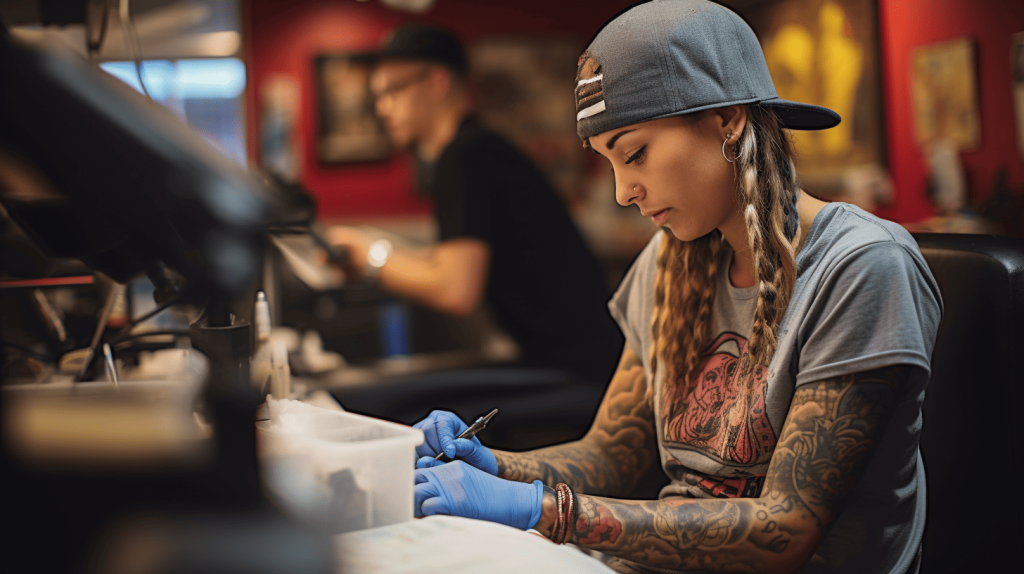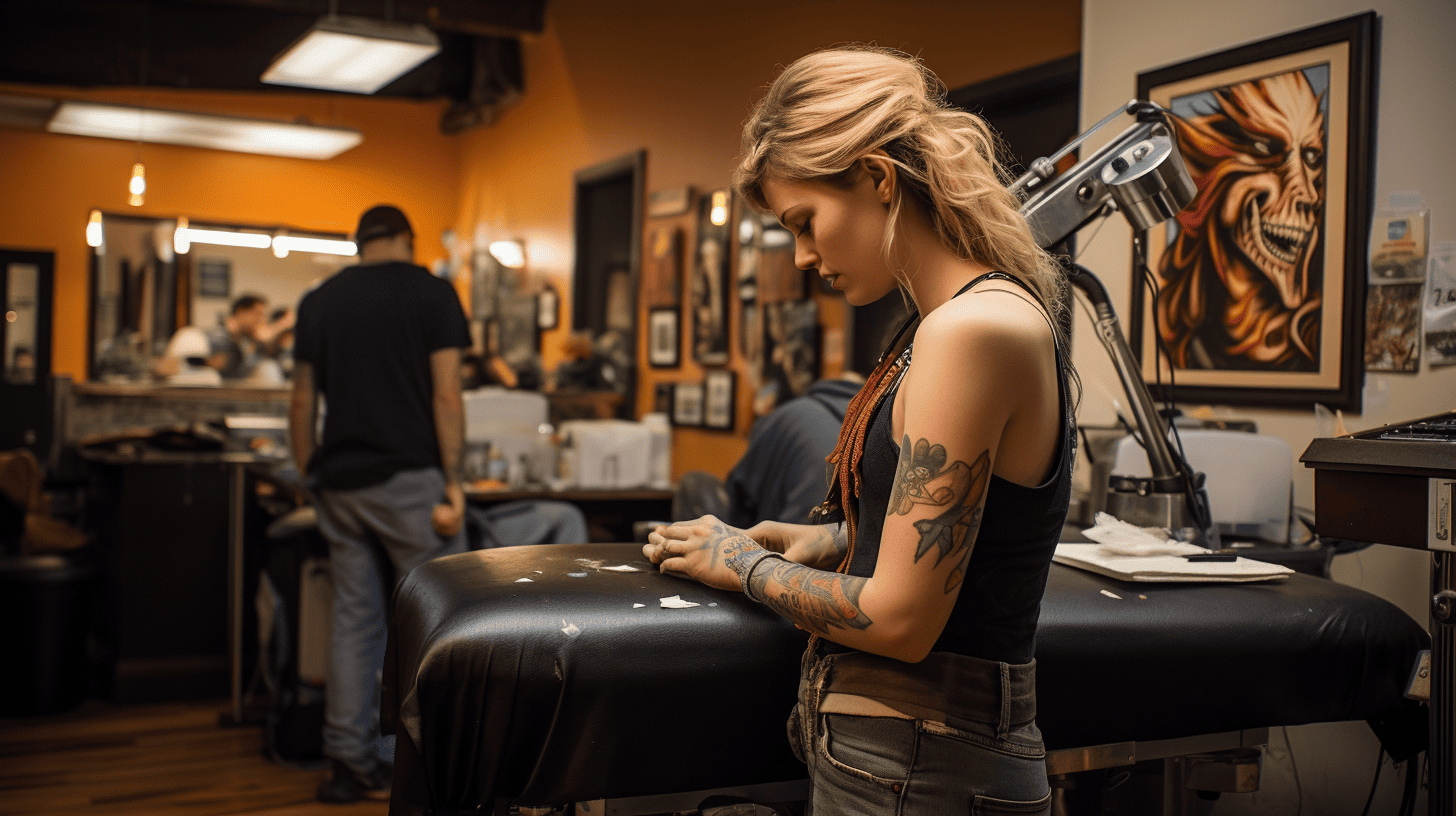In the captivating realm of self-expression, the canvas of the human body serves as a testament to the boundless creativity and individuality that define us. Within this tapestry of personal artistry, the marriage of piercings and tattoos is a testament to the diverse avenues through which we manifest our identities. In this exploration, we delve into the harmonious coexistence of these two distinct forms of body art, highlighting how they interlace to create a multifaceted symphony of self-expression.
Join us as we embark on a journey through the artistry of the body, where the intersection of piercings and tattoos transcends mere adornment, unfolding into an ode to the diverse beauty within us.
The Art of Adornment
Piercings and tattoos are distinct forms of self-expression, each with its allure. Piercings allow for a dynamic array of placements, from earlobes to belly buttons, while tattoos are intricate designs etched onto the skin. The two choices often reflect one’s artistic preferences and comfort zones. Piercings offer a more malleable form of expression. They can be temporary or permanent, subtle or bold, and cater to individual tastes. From delicate nose studs to elaborate septum rings, piercings can add an element of playfulness and spontaneity to one’s appearance. Tattoos are permanent, serving as visual narratives of personal stories, beliefs, and passions. The intricate designs can encompass everything from minimalist symbols to complex masterpieces.
Are there age restrictions for getting piercings or tattoos?
Earlobe piercings often have lower age restrictions and may be allowed for minors with parental consent. The age varies, but it’s commonly around 14 to 16 years old. Piercings in areas other than the earlobes, such as the nose, tongue, or belly button, may have stricter age requirements due to potential healing and infection risks. Many piercing studios require clients to be at least 18 for these piercings.
In many places, getting a tattoo as a minor (under 18) requires parental or legal guardian consent. The age at which this consent is required can vary, but it’s often around 16 or 17. Some regions have a legal age of consent for tattoos, meaning individuals can get tattooed without parental consent once they reach a certain age (usually 18). These age restrictions are in place to prioritize the safety and well-being of individuals.

Which one is more versatile for creative expression?
Tattoos are like permanent works of art etched onto the skin. They offer a wide range of creative possibilities due to their larger canvas. Tattoos can be large and intricate, allowing for detailed designs with intricate shading and colors. Tattoos can be placed on various body parts, from arms and legs to back, chest, and even fingers. Tattoo designs can be customized to reflect an individual’s personality, experiences, beliefs, or interests. Tattoos can serve as visual narratives, telling stories that hold personal significance.
Piercings, while generally smaller in size compared to tattoos, also offer unique ways to express creativity. Piercings can be placed in multiple locations on the body, creating an opportunity for artistic arrangements and combinations. For instance, ear piercings can be combined to form curated “earscapes.” The jewelry chosen for piercings contributes to creative expression. Different types of jewelry can reflect various styles and moods. Multiple piercings can be combined to create unique patterns or aesthetics. People often curate collections of piercings that reflect their style. Some piercings can be temporary, allowing individuals to experiment with different looks without a permanent commitment.
What are the potential risks and aftercare considerations for piercings and tattoos?
Both piercings and tattoos involve some risk, and proper aftercare is essential to ensure the healing process goes smoothly and minimize complications.
Piercings: One of the most common risks is infection. Poor aftercare, touching the piercing with dirty hands, or using unclean jewelry can introduce bacteria. Piercings can migrate or be rejected by the body, especially if the jewelry is not placed correctly or if the body doesn’t tolerate it. Some individuals might develop allergic reactions to certain metals used in piercing jewelry. Specific individuals are prone to developing keloids or excessive scarring around the piercing site.
Keeping the piercing area clean is crucial. Use saline solution or a piercing aftercare product recommended by the piercer. Resist touching the piercing with dirty hands, which can introduce bacteria and hinder healing. Keep the initial jewelry in place until the piercing fully recovers to prevent complications. Avoid exposing the piercing to harsh chemicals, makeup, or hair products during healing.
Tattoos: Like piercings, tattoos can also get infected if not properly cared for during the healing process. Some individuals might develop allergic reactions to tattoo ink, causing itching, redness, or other skin issues. In some cases, ink can spread beyond the intended area, causing a blurry blowout. Over time, tattoo colors may fade due to sun exposure, improper aftercare, or ink quality.
Keep the tattoo clean using mild soap and water, and apply a recommended tattoo aftercare product to moisturize it. Protect your tattoo from direct sunlight during the healing process, and use sunscreen after it’s fully healed to prevent fading.
Can I have both piercings and tattoos?
Many people choose to embrace both forms of body art as a way to express their individuality and creativity. Having both piercings and tattoos allows for a diverse range of artistic expression. Piercings and tattoos each offer their distinct ways to enhance your appearance. Combining both allows for a multidimensional and versatile approach to self-expression.
Certain piercings or tattoos represent different aspects of your personality, interests, or experiences. Having both forms of art can help you express various facets of yourself.
Different occasions or moods may call for different forms of expression. Having piercings and tattoos allows you to adapt your appearance to suit your feelings or the situation.
Some individuals view their body as a canvas for an ongoing artistic journey. Both piercings and tattoos can be part of this evolving narrative.
Conclusion
In the dynamic world of body art, the choice between piercings and tattoos is a profoundly individual one. Both forms of self-expression carry their distinct appeal, allowing individuals to curate their appearances and express their personalities in unique ways. Whether you choose the permanence of tattoos or the versatility of piercings, the journey of self-discovery and expression remains at the heart of the decision.
Deciding between piercings and tattoos involves introspection. Consider your comfort level with permanence, your desired level of self-expression, and how each option aligns with your personality.
FAQs:
Which one is more painful, getting a piercing or getting a tattoo?
Pain perception varies among individuals, but tattoos tend to be more painful due to the longer duration of the process. Piercings involve a quick moment of discomfort, whereas tattoos can cause discomfort during the entire tattooing process.
Can I remove a tattoo or piercing if I change my mind?
Obliterating a tattoo can be challenging and often requires multiple laser sessions. Piercings, on the other hand, can be removed, but some might leave behind small scars. Consider your commitment level before opting for either.
Do cultural factors influence the choice between piercings and tattoos?
In some cultures, piercings or tattoos hold symbolic significance; in others, they might be viewed as a form of self-expression without cultural ties.
Which one is more suitable for professional settings?
Piercings tend to be easier to hide if necessary. Tattoos can be more challenging to conceal, depending on their size and location.

